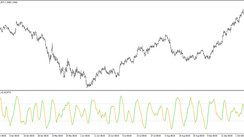Any seasoned trader will tell you that setbacks, including substantial financial losses, are a part of the trading landscape. The real challenge is not just overcoming the financial hit but healing the psychological wounds, specifically the blow to your confidence.
Successful traders don't operate from a place of overconfidence or fear—both can obstruct your view of the market. Genuine confidence enables you to seize opportunities, limit losses when things go awry, and practice patience when market conditions are unfavorable. However, after a series of losses, your confidence may be shaken, causing you to question your trading strategies.
Consequences of a Big Loss
Following a losing streak, you might fall into common traps like exiting trades prematurely, holding on too long, bypassing potential opportunities for fear of incurring more losses, or even taking on too many trades hoping to regain lost ground. If you find yourself grappling with these issues, it's essential to know that you can recalibrate and regain your footing.
Important Considerations
Recovering from a substantial loss isn't only about the financial strategy; it's equally about psychological resilience. Align your strategies to deal with losses alongside your investment plan. It's vital to pinpoint and address the root cause of your trading slump before resuming, to prevent a recurrence.
Coping with a Bad Trading Day
Every trader experiences off days. It's prudent not to let a bad day cost you more than what you typically earn on a profitable day. Major losses can trigger internal turmoil, including desires for vengeance, fear, anger, frustration, and even self-loathing. On such a day, clear-headed trading is unlikely. Given the sheer number of trading days in a year, there's no need to rush back into trading immediately after a bad day.
Taking Accountability
It's crucial to take responsibility, regardless of whether you've had a few bad days, endured a colossal single loss, or faced life-altering financial hardship. If the loss is so significant that it threatens financial ruin, don't trade until the situation is rectified. In the event of a significant drawdown or an abrupt substantial loss, remember that everyone loves a comeback story.
Although it's easy to find excuses for losing trades, remember that as traders, we assume all risks associated with our orders. Acknowledging that you're responsible for the outcomes of your orders is crucial to avoid repeating the same mistakes. Determine what you could have done differently to minimize the chances of recurrence, rather than shifting the blame. If you're in control of your trading, you can also remedy the situation.
Taking Steps for Improvement
By addressing the specific issue that triggered your loss, you're already making progress. But there's another challenge: restoring confidence. Confidence might still be low, despite fixing the issue that led to the loss.
Refocusing Your Efforts
Following a substantial loss, it's time to revisit the fundamentals. Concentrate on your trading plan and its execution. Return to the reasons that first drew you to trading and rekindle your passion for the challenges it presents. A significant loss often serves as a reality check, nudging you back on track when you've strayed.
Practicing and Rebuilding Confidence
After a major loss, it's common to have diminished confidence. This could lead to bad trading habits, such as skipping trades, panicking, or being overly aggressive to recoup losses. Consider practicing on a demo account for a few days to regain confidence without financial risks.
Gradual Re-entry: The Power of Starting Small
If you've had some profitable days on the demo account and you're feeling ready to dip your toes back into the water, it's essential to start off slowly. Do not rush back into trading with large position sizes as before. Ease back into trading with a small position size on the first day. Even if it seems unimpressive or unsatisfying compared to your previous trades, it's a crucial step in regaining your footing.
A winning day, even with a small position size, can do wonders for rebuilding confidence. As your comfort level rises, gradually increase your position size on subsequent days. On the other hand, if you face a losing day, the blow will be significantly softened by the smaller position size, thus safeguarding your mental capital.
Remember, there's no shame in starting small. Trading isn't a race, it's a journey, and starting small after a significant loss is the equivalent of finding your bearings and checking your compass before embarking on the next leg of your journey.
Moreover, in these initial stages, focus on refining your strategies and gaining back your confidence, rather than making big profits. Perfect execution of your strategy should be your primary objective; profits are merely the byproduct of well-implemented strategies.
Embrace this period as an opportunity to refocus on the essentials and rekindle your love for trading. You will likely find that as you start to trade more comfortably and confidently, profits will follow naturally, without any additional pressure or forced actions.
It's easy to feel impatient and want to jump back into large trades, especially after experiencing the exhilaration of significant wins. However, the aftermath of a major loss is a time for patience, careful assessment, and calculated steps.
By gradually increasing your position sizes over the course of about a week, you allow yourself the space to adjust to the ebb and flow of the market, to celebrate small wins, and to absorb any minor losses without damaging your regained confidence. Don't forget, rushing back into live trading when you're not fully prepared can lead to further losses. This methodical approach helps prevent such setbacks.
Therefore, adopt the mantra of "starting small" as a crucial strategy in your comeback journey. It's not about sprinting to the finish line, but rather running a marathon, steadily pacing yourself to reach the end goal. After all, in the world of trading, slow and steady can indeed win the race.
Conclusion
If you've suffered a significant loss, pause trading for a few days. Upon returning, scrutinize your trading plan, identify the problem areas, and adjust your trading plan accordingly. Rebuild your confidence through practice on a demo account, and only return to live trading when you're consistently profitable and feel mentally prepared.
Probing the Depths: Your Burning Questions Answered
I've lost a hefty chunk of change in day trading. How does this affect my tax filings?
Trading mishaps can sting, but there might be a silver lining when tax season rolls around. Capital losses from day trading, similar to other investment losses, are reported on Form 1040 Schedule D. Your brokerage will send you a 1099-B form that outlines your gains or losses for the year. Interestingly, you can actually deduct capital losses up to $3,000 from your ordinary income each year. But what if your losses exceed $3,000? Fret not, any remaining loss can be carried over into the following tax year(s) to offset future capital gains. It's always wise to consult with a tax professional to understand the details and implications.
The market's not going my way. When do I throw in the towel and cut my losses in day trading?
Knowing when to bow out is one of the toughest decisions for a trader. However, your well-crafted trading strategy should be your guiding light. For example, if you're trying to short a skyrocketing stock and it continues its upward trajectory to break its recent high, that might be your signal to cut losses. It's essential to stick to your plan and exit points, preventing emotions from clouding your judgment. But remember, if day trading is causing mounting debt or negatively impacting your mental health, it might be time to reassess your involvement in this high-risk, high-reward activity altogether.
How do I recover my confidence after a significant trading loss?
A major trading loss can bruise your confidence and leave you second-guessing your strategies. But remember, even the most successful traders face losses. One approach to regain confidence is to practice with a demo account. It provides a realistic trading experience without the risk, allowing you to hone your skills and strategy. Once you start consistently turning a profit on your demo account and feel mentally prepared, you can return to live trading. But proceed with caution, starting with smaller position sizes and gradually increasing them as your confidence improves. Patience and persistence are your allies in this journey.
Remember, trading is a marathon, not a sprint. Embrace learning from losses as stepping stones on your path to success.





